In the world of object-oriented programming (OOP) in PHP, inheritance is a central concept that allows you to extend existing classes and reuse their functionalities in new classes. A key element for utilizing this functionality is the keyword parent. With this keyword, you have the ability to access methods and properties of the parent class. In this guide, I will illustrate the use of the keyword parent through a practical implementation, so you can effectively apply this technique in your projects.
Key Insights
- The keyword parent allows access to methods of the parent class.
- It helps to avoid redundant code by reusing existing functionalities.
- By using parent, you can significantly improve the maintainability of your classes.
Step-by-Step Guide
Step 1: Develop a Basic Understanding of the Class "Car"
To understand the concept of parent, let's first take a look at the class Car, which contains a method called accelerate. This method executes basic acceleration logic, but in a simple format. No complex logic is implemented here yet.
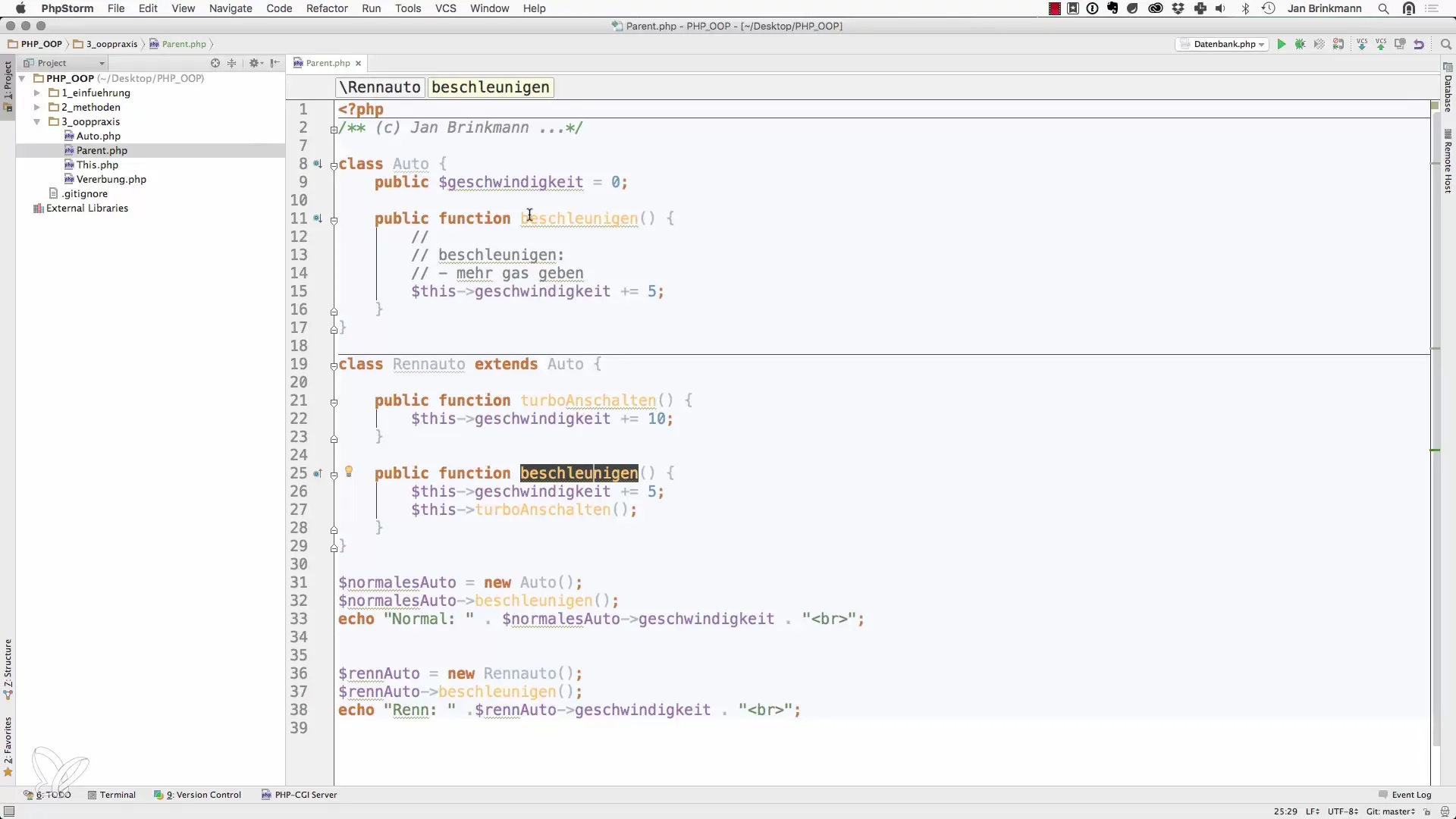
Step 2: Introduction of the Class "RaceCar"
Now we want to create a new class called RaceCar that inherits from the class Car. In this subclass, we implement a specific acceleration logic that takes into account the turbo in addition to the standard behavior.
Step 3: Increase the Complexity of the Method "accelerate"
The method accelerate in the class Car could be made more complex through various steps like pressing the gas pedal and operating a fuel pump. This means a simple PHP statement is no longer sufficient to adequately represent the acceleration.
Step 4: Use of parent to Avoid Code Duplication
To reuse the existing functionality of the method accelerate from the class Car, you can call parent::accelerate() in the method accelerate of the class RaceCar. This allows you to access the original implementation, saving you from having to write the basic logic again.
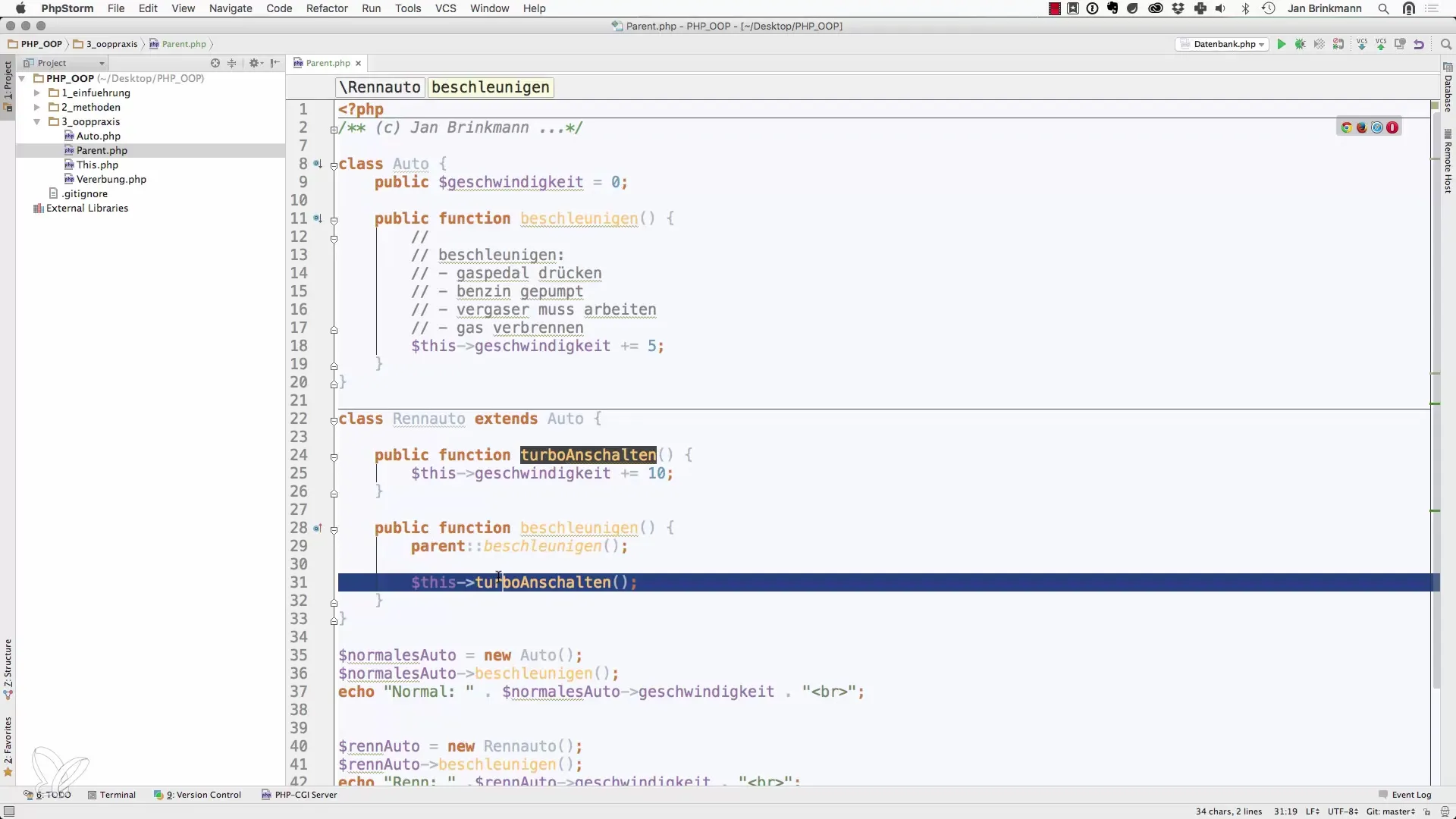
Step 5: Passing Parameters with parent
If the method accelerate in the class Car should accept parameters like speed, you can also pass these through the parent keyword. For instance, the speed at which the vehicle should accelerate could take variable values.
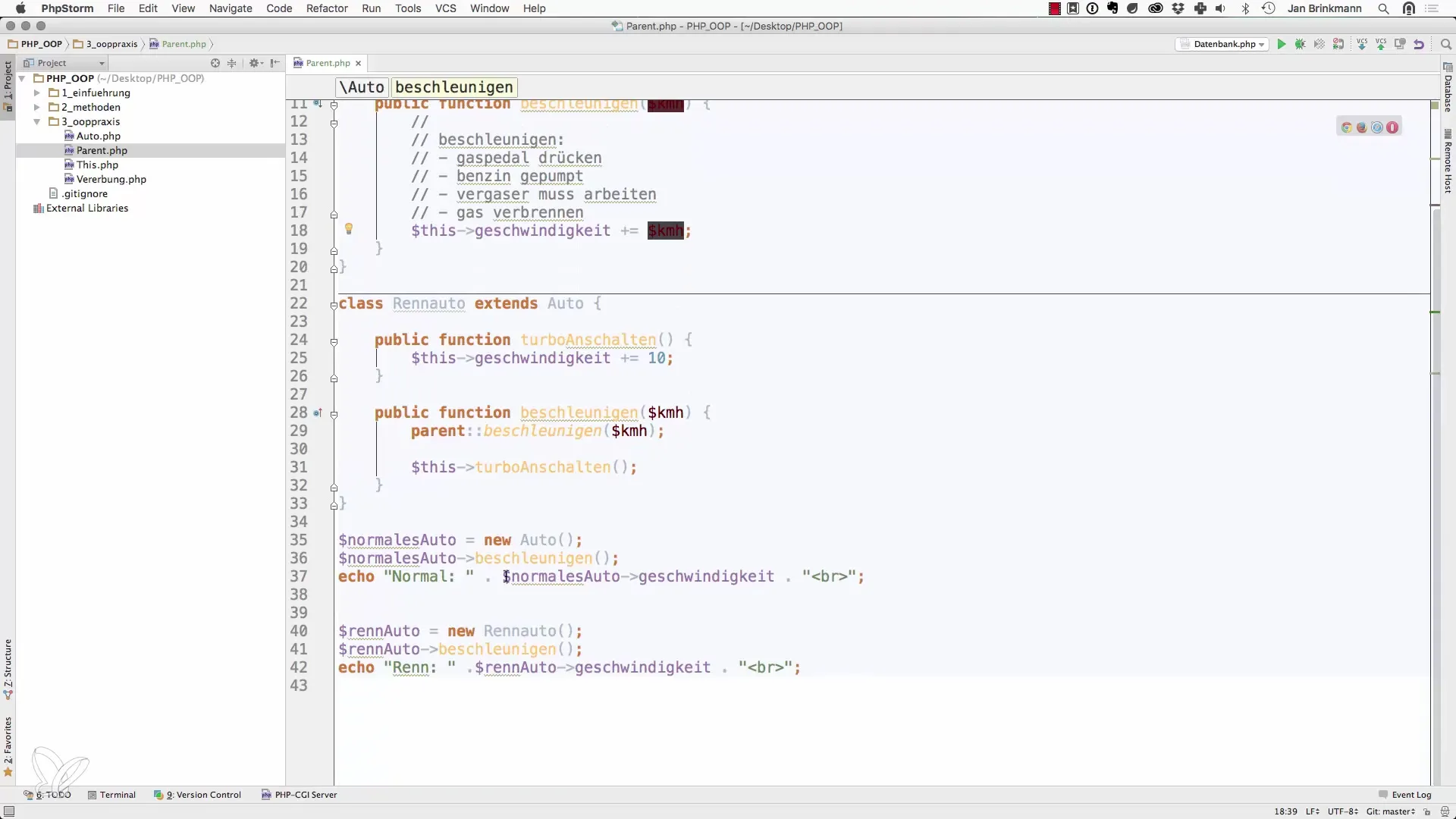
Step 6: Validate Functionality in the Browser
After you have made the implementations, check the behavior of your classes in the browser. You will find that the RaceCar operates independently of the base class Car, but the turbo functionality is applied as desired, accelerating the RaceCar at a higher speed.
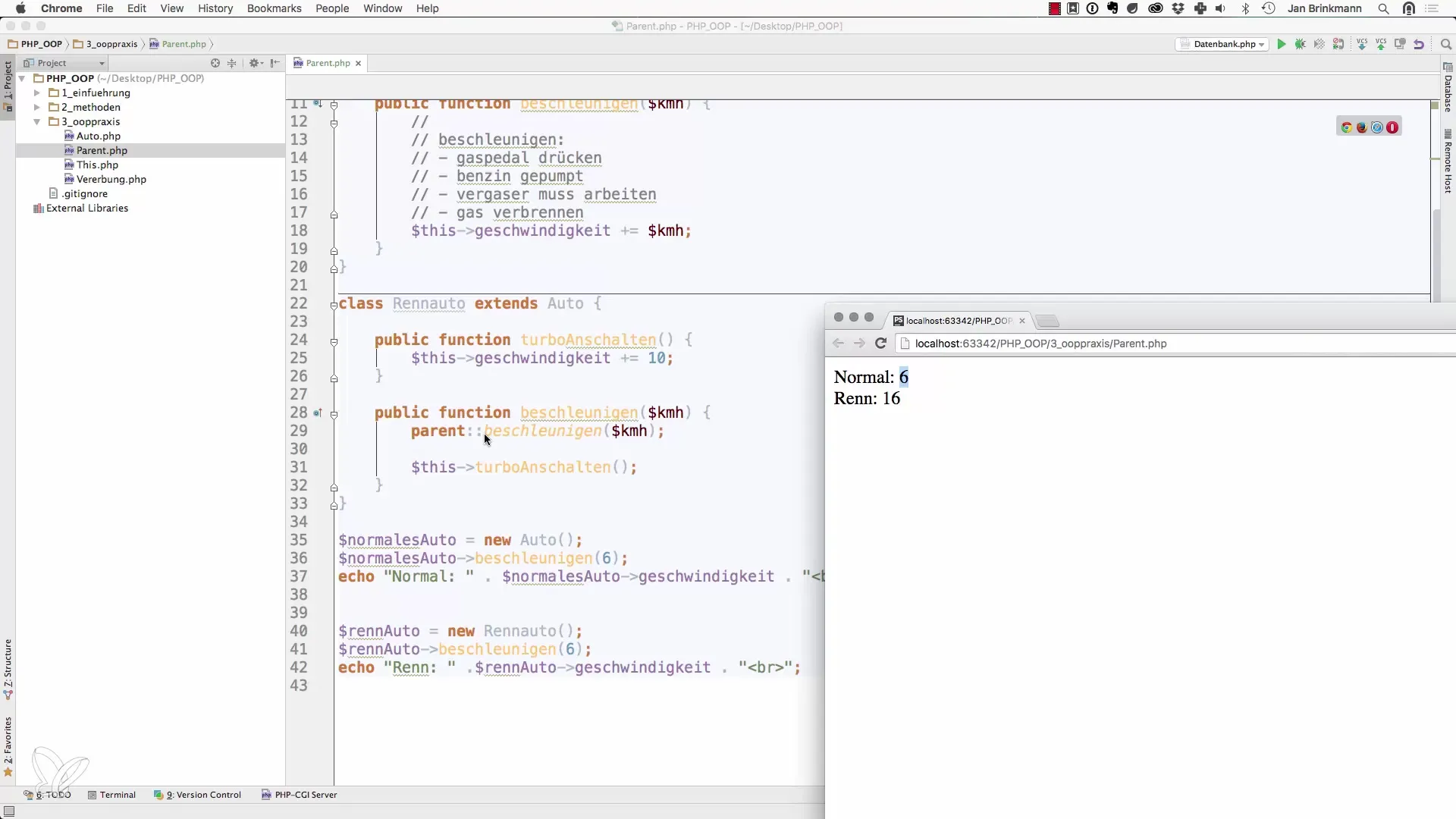
Step 7: Conclusion on Using parent
In summary, we can say that the use of parent not only increases the reusability of code but also provides better maintainability and structure for your OOP projects. Instead of writing duplicate code, you efficiently access existing logic.
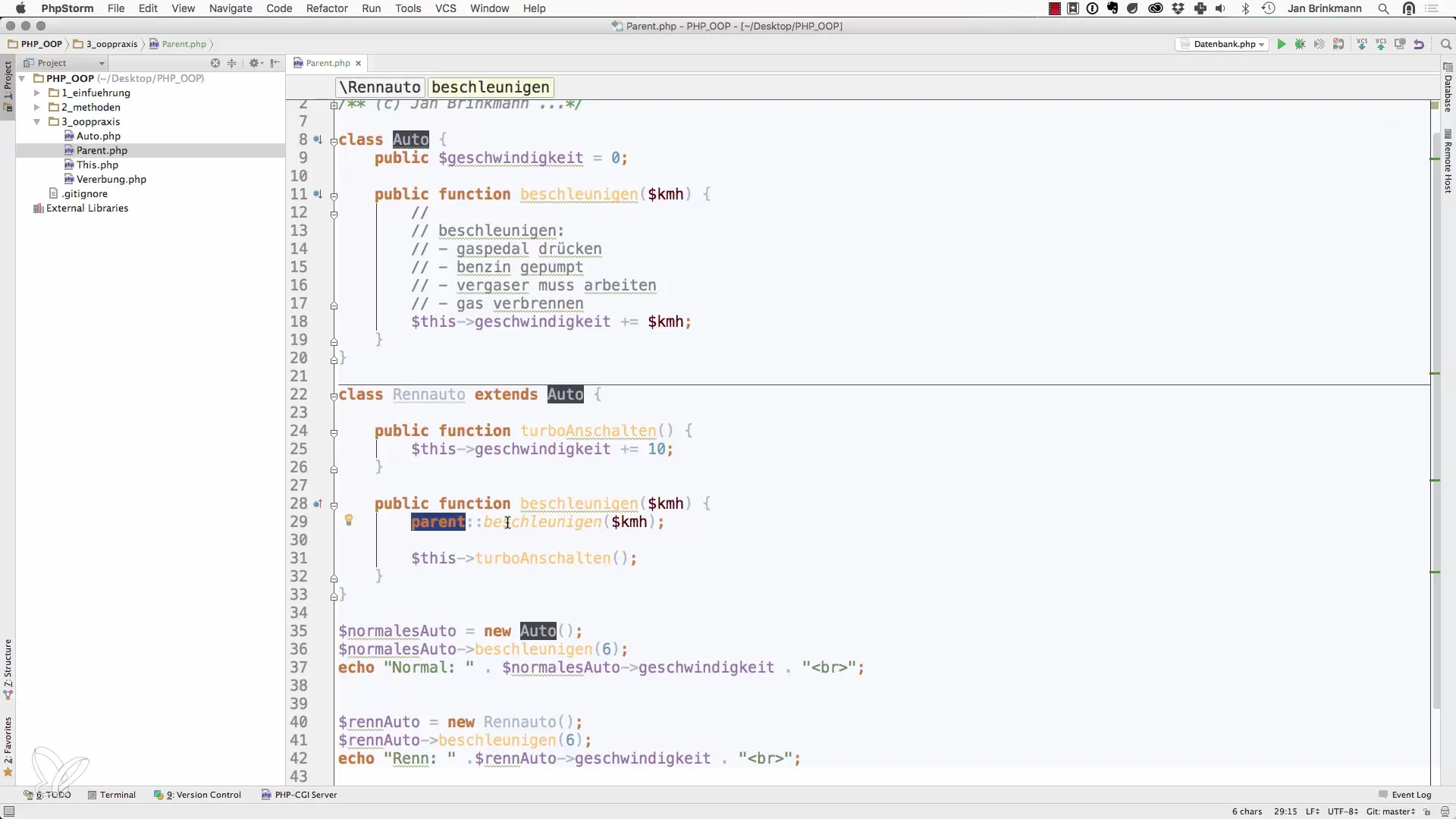
Summary – Object-Oriented Programming with PHP – Effectively Utilizing the Keyword "parent"
In this step-by-step guide, you learned how to use the keyword parent to call methods of the parent class in a derived class. This allows for effective code reuse and improves the maintainability of your applications.
Frequently Asked Questions
How do you use the keyword parent in PHP?You can use parent::MethodName() to access the method of the parent class.
Why should I use parent?It avoids code duplication and improves the maintainability of your code.
Can I pass parameters to methods like parent?Yes, you can pass parameters using parent::MethodName($parameter).
What happens if the parent method does not exist?A call to parent on a non-existent method results in an error message.
What are the advantages of using inheritance in PHP?Inheritance allows you to extend existing classes and effectively reuse their functionalities.


